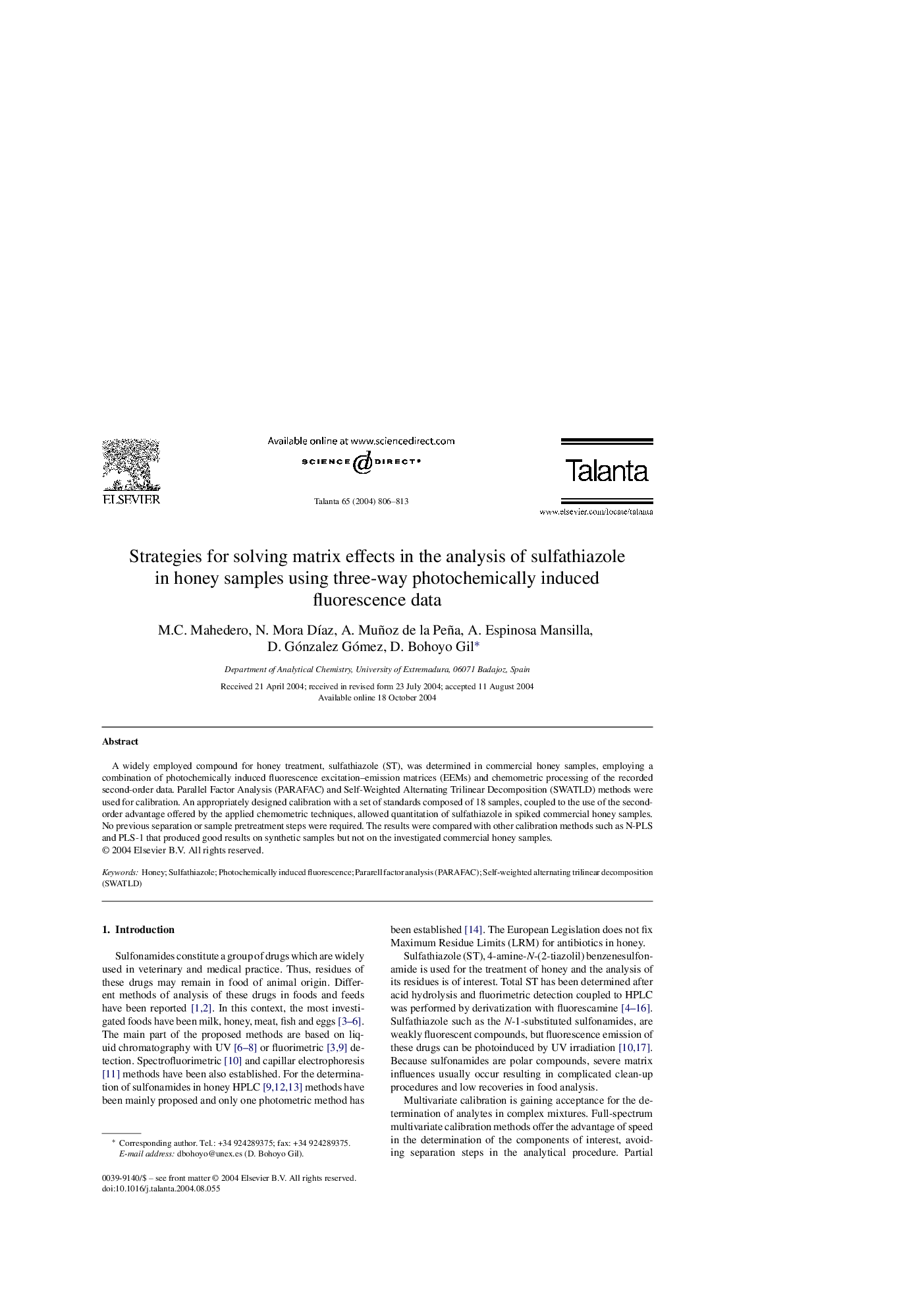| Article ID | Journal | Published Year | Pages | File Type |
|---|---|---|---|---|
| 10561611 | Talanta | 2005 | 8 Pages |
Abstract
A widely employed compound for honey treatment, sulfathiazole (ST), was determined in commercial honey samples, employing a combination of photochemically induced fluorescence excitation-emission matrices (EEMs) and chemometric processing of the recorded second-order data. Parallel Factor Analysis (PARAFAC) and Self-Weighted Alternating Trilinear Decomposition (SWATLD) methods were used for calibration. An appropriately designed calibration with a set of standards composed of 18 samples, coupled to the use of the second-order advantage offered by the applied chemometric techniques, allowed quantitation of sulfathiazole in spiked commercial honey samples. No previous separation or sample pretreatment steps were required. The results were compared with other calibration methods such as N-PLS and PLS-1 that produced good results on synthetic samples but not on the investigated commercial honey samples.
Related Topics
Physical Sciences and Engineering
Chemistry
Analytical Chemistry
Authors
M.C. Mahedero, N. Mora DÃaz, A. Muñoz de la Peña, A. Espinosa Mansilla, D. Gónzalez Gómez, D. Bohoyo Gil,
